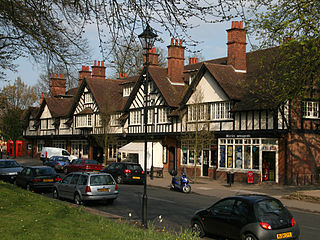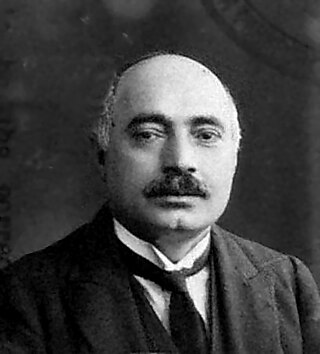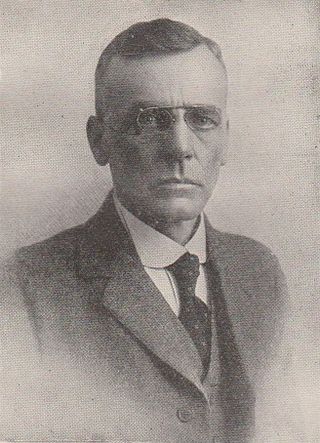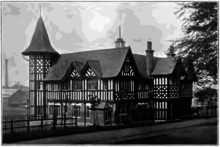
Cadbury, formerly Cadbury's and Cadbury Schweppes, is a British multinational confectionery company owned by Mondelez International since 2010. It is the second-largest confectionery brand in the world, after Mars. Cadbury is internationally headquartered in Greater London, and operates in more than 50 countries worldwide. It is known for its Dairy Milk chocolate, the Creme Egg and Roses selection box, and many other confectionery products. One of the best-known British brands, in 2013 The Daily Telegraph named Cadbury among Britain's most successful exports.

John Cadbury was an English Quaker and businessperson, who founded the Cadbury chocolate company in Birmingham, England. He was also involved in activism and philanthropy, championing workers' rights, environmental and industrial reform, temperance, animal welfare, education, and healthcare, while actively opposing cruelty, exploitation, and indulgent practices.

Bournville is a model village on the southwest side of Birmingham, England, founded by the Quaker Cadbury family for employees at its Cadbury's factory, and designed to be a "garden" village where the sale of alcohol was forbidden. Cadbury's is well known for chocolate products – including a dark chocolate bar branded Bournville. Historically in northern Worcestershire, it is also a ward within the council constituency of Selly Oak and home to the Bournville Centre for Visual Arts and the Cadbury's chocolate factory. Bournville is known as one of the most desirable areas to live in the UK; research by the Joseph Rowntree Foundation in 2003 found that it was "one of the nicest places to live in Britain".

George Cadbury was an English Quaker businessman and social reformer who expanded his father's Cadbury's cocoa and chocolate company in Britain.

Richard Barrow Cadbury was an English entrepreneur, chocolate-maker and philanthropist. He was the second son of the Quaker John Cadbury, founder of Cadbury's cocoa and chocolate company.
Claremont is a rural / residential locality in the local government areas (LGA) of Glenorchy (75%) and Derwent Valley (25%) in the Hobart and South-east LGA regions of Tasmania. The locality is about 6 kilometres (3.7 mi) north of the town of Glenorchy. The 2021 census recorded a population of 8,397 for the state suburb of Claremont.

William Alexander Harvey was an English architect. He is most notable for his design of Bournville, the model 'garden suburb' built by Cadburys to house their chocolate-making workforce to the south of Birmingham.

Alphonse Mingana was an Assyrian theologian, historian, Syriacist, orientalist and a former priest who is best known for collecting and preserving the Mingana Collection of ancient Middle Eastern manuscripts at Birmingham. Like the majority of Assyrians in the Zakho region, his family belonged to the Chaldean Catholic Church. Alphonse was born to Paolus and Maryam Nano, and had seven siblings.

Cadbury's Chocolate Factory, also known as Cadbury's Claremont and colloquially as Cadbury's, is a prominent Australian chocolate factory situated in Claremont, Tasmania. Producing a company-record of over 60,000 tonnes of chocolate in 2021, it has earned distinction as "the largest chocolate factory in the southern hemisphere". Established in 1921, the factory and surrounding model village estate marked Cadbury's first business expansion outside the United Kingdom. The facility is currently owned by the multinational conglomerate Mondelez International, which purchased Cadbury in 2010.
Selly Oak Colleges was a federation of educational facilities which in the 1970s and 1980s was at the forefront of debates about ecumenism - the coming together of Christian churches and the creation of new united churches such as the Church of South India; the relationships between Christianity and other religions, especially Islam and Judaism; child-centred teacher training; and the theology of Christian mission. It was located on a substantial campus in Selly Oak, a suburb in the south-west of Birmingham, England, about a mile from the University of Birmingham. In 2001 the largest college, Westhill College, whose main work was the training of teachers, passed into the hands of the University of Birmingham, and most of the remaining colleges closed, leaving Woodbrooke College, a study and conference centre for the Society of Friends, and Fircroft College, a small adult education college with residential provision, which continue today.

Samuel Bowly (1802–1884) was an English abolitionist and temperance advocate.

Dame Elizabeth Mary Cadbury was a British activist, politician and philanthropist. Her husband was George Cadbury, the chocolate manufacturer.
The Cadbury family is a British family of wealthy Quaker industrialists descending from Richard Tapper Cadbury.

Woodbrooke Quaker Study Centre was a Quaker college and conference facility in Selly Oak, Birmingham, England.
The Birmingham West Suburban Railway was a suburban railway built by the Midland Railway company. Opened in stages between 1876 and 1885, it allowed both the opening of development of central southwest suburban Birmingham south into Worcestershire and the by-passing of railway traffic via the Birmingham and Gloucester Railway into central Birmingham. Today, it forms a major section of the Cross-City Line, running from Lichfield to Redditch. It also forms an important part of the Cross Country Route.

Selly Manor is a timber-framed building in Bournville, that was moved to its current site in 1916 by chocolate manufacturer and philanthropist George Cadbury.

John Henry Barlow, widely called "the outstanding Quaker statesman of his generation", was an ambassador for peace in the war years and clerk of London Yearly Meeting for seven years. He was the person who most held the Society together at a taxing moment in its history. He was one of the first members of the Friends' Ambulance Unit. Later he served 23 years as the first secretary and general manager of the Bournville Village Trust. In 1920 he led a delegation to Ireland to look into the Black and Tans atrocities.
Cadbury is a British multinational confectionery company owned by Mondelēz International. It is the second largest confectionery brand in the world after Mars. Cadbury is headquartered in Uxbridge, London, and operates in more than fifty countries worldwide. Its best known products include Dairy Milk chocolate.

John Barlow (1815–1856) is best known as a pioneer of veterinary studies and professor at Royal (Dick) School of Veterinary Studies, Edinburgh, Scotland. He is credited with being the first to introduce the microscope to the school and his many scientific papers which appeared in such publications as The North British Agriculturalist were and remain to this day the basis of much modern research. He came from an old Quaker family in Cheshire, England.
George Cadbury Jr was a British chairman of Cadbury, business theorist, and philanthropist. He is best known for developing Cadbury Dairy Milk in 1905 which would become the company's best-selling product.















